It’s quiet outside.
The late afternoon sun provides a blanket of warmth on a comfortable September day. Bethlehem’s Saucon Creek is shining, and the sound of the rush of its shallow yet commanding waters acts as a backdrop to the scenery.
Mark, a Bucks County resident, is pacing around the creek. He’s fished these waters for 20 years.
But as he stands on a bridge overlooking the Saucon Creek carving its way downstream, he’s concerned. The Saucon Creek is artificially stocked with trout by the Pennsylvania Fish and Boat Commission.
“I know stocking fish can have a negative effect on wild trout,” Mark said, who requested only his first name be used in this report. “You want fish to reproduce.”
Trout stocking has been around in the United States for well over 100 years and has its origins in the 1880s. In Pennsylvania, opening day for trout season is somewhat of a statewide holiday: Anglers purchase their licenses, prepare their gear and oftentimes ready their entire families for a prime fishing experience in the early spring with trout galore swimming in cool waters.
The Pennsylvania Fish and Boat Commission stocked 832 streams and lakes this year with over 4.4 million trout — three million of which come from state-owned hatcheries while the remainder are stocked through private cooperative nurseries. Trout typically spend anywhere from 18 months to three years in a hatchery before being released.
The multi-million dollar state-regulated program which aims to provide recreational opportunities for Pennsylvanians is also the subject of scrutiny from ecologists and some anglers who worry the program ultimately harms the state’s waters and biodiversity.
In the Lehigh Valley, the Lehigh River, Saucon Creek, Monocacy Creek and Lehigh Canal — to name a few — are all stocked with trout.
There’s a reason that trout stocking exists in the first place: Trout likely aren’t native to that specific body of water, may not be able to survive in that area and therefore typically don’t live long enough to reproduce after being released. In fact, only the brook trout — Pennsylvania’s state fish — is native to parts of the Keystone State, while the rainbow and brown trout are not.
The trout stocking program calls upon two classic debates that much of civil society has been trying to navigate for decades. The issue is two-fold: the delicate balance between the economy and the environment on one end, and the tug-of-war between game and sport and conservation on the other.
“One of the biggest concerns with (trout stocking) is that it is primarily done for economic reasons, not for environmental reasons,” said Doug Thompson, a professor in geoscience and environmental studies at Connecticut College. “In many cases … non-native species are interfering with native species, and we have species loss as a result.”
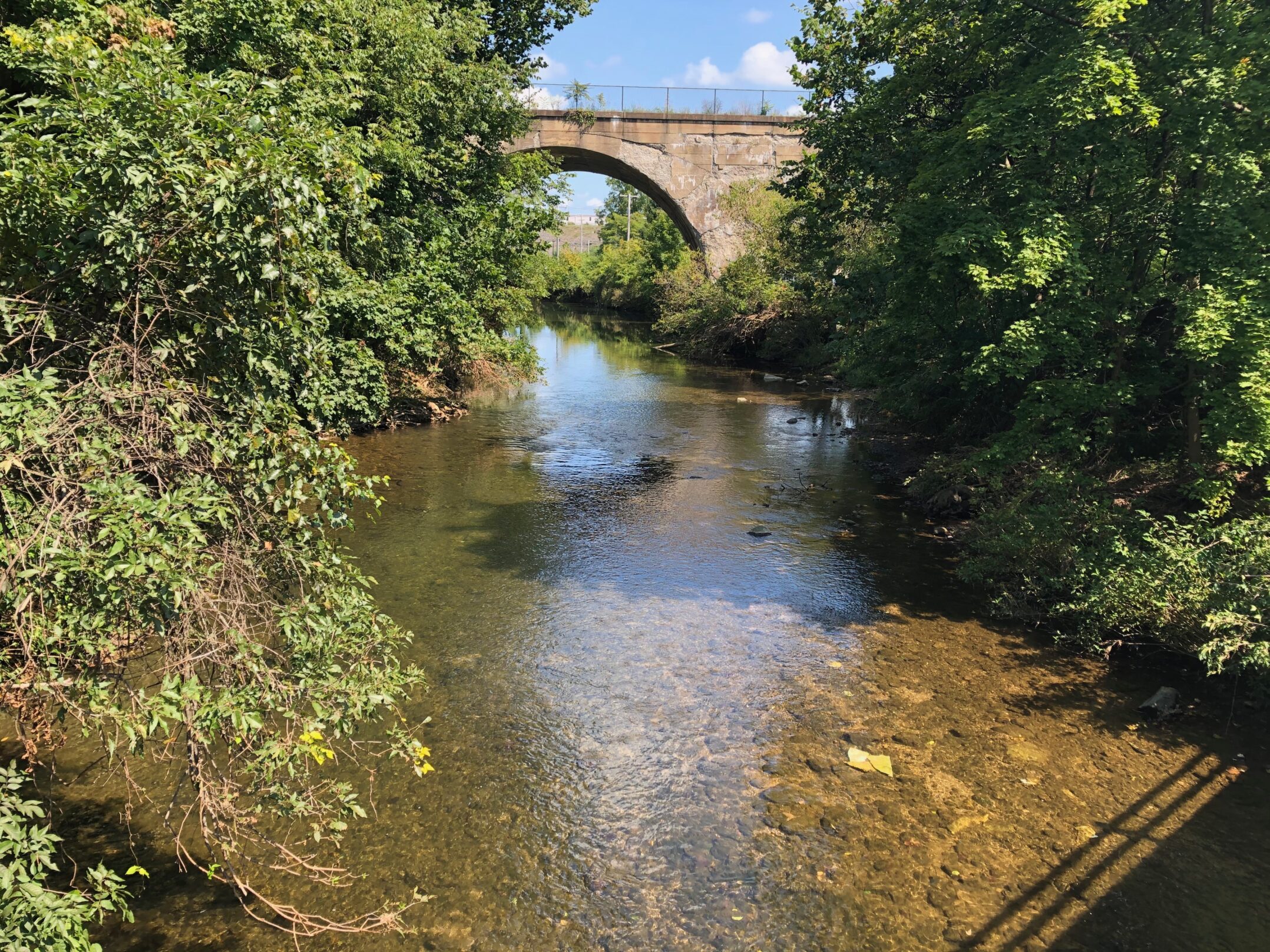
The Saucon Creek on Sept. 8, 2020. The Saucon Creek runs through Bethlehem and is stocked with trout by the Pennsylvania Fish and Boat Commission. (Jordan Wolman/B&W Staff)
Water temperature is an important factor when determining whether trout can survive in a given body of water, and the Fish and Boat Commission said the preferred temperature range for trout is between 50 and 60 degrees Fahrenheit. While year after year Pennsylvania stocks its lakes and streams in waters that don’t support wild trout populations, especially in the warmer and more urban southeastern part of the state, Mark hit on a harsh reality of the trout stocking program: “A lot of these fish die,” he said.
Michael Parker, a spokesman for the Fish and Boat Commission, defended the program, saying the agency “takes the issue of invasive species very seriously” and does not stock in waters with already “self-sustaining” wild trout populations in the “vast majority of cases.”
Instead, Parker said, the trout stocking program is a “put and take opportunity” and is not meant to grow the trout population. Parker said the agency does not immediately release the numbers of trout stocked in individual bodies of water, only the total amount of stocked trout in the state, so that competition among cities and counties doesn’t break out. But he did say “angling pressure” — how popular a given body of water is among anglers — is an important indicator for how many trout a body of water receives through stocking.
Parker said the commission is finding new wild trout populations “all the time” and acts accordingly to remove those streams from the stocking schedule. However, Parker said when a Class A wild trout water is removed from the stocking list, the agency does not reduce the overall number of stocked trout, but rather reallocates those fish “into the nearest suitable location for anglers to enjoy.”
The goal, according to the commission’s website, is to provide a recreational opportunity for more Pennsylvanians than would otherwise occur based on wild trout populations alone.

Jon Doyle of Easton fishes in the Lehigh Canal. Doyle said angling is an important way residents can connect with nature. (Jordan Wolman/B&W Staff)
“They’re placed into these waters and then they’re there to be caught,” he said. “The goal is harvest. And we know that these fish are not really going to survive long-term in these waters.”
Wes, a Bethlehem resident who fishes the Lehigh Canal and Saucon Creek, said he thinks Pennsylvania’s trout stocking is “a great program.” He said he’s been fishing “as long as I can remember” when his father brought him fishing as a child. Wes taught his children to fish, too. Exposing people to the outdoors, he said, is an important part of keeping people healthy.
Wes requested only his first name be used in this report.
And Jon Doyle, an Easton resident who fishes the Lehigh Canal and Jordan Creek, doesn’t have a problem with the trout stocking program, either. He said not enough people take advantage of outdoor recreational opportunities.
“(Trout stocking) is a good practice, though it’s hard to maintain,” Doyle said. “Replenishing isn’t really a big deal to me.”
Mark admitted the plus side of the trout stocking program is that it encourages fishing. But Thompson was more blunt.
“People don’t see it as problematic because they like trout,” said Thompson, who wrote, “The Quest for the Golden Trout: Environmental Loss and America’s Iconic Fish.” “It’s as simple as that. We’ve seen problems with certain species of trout, like the golden trout in California. We’re losing species, and generally speaking, species loss is a very concerning thing for ecologists. Diversity is a very valuable thing in any ecosystem, so as we start losing that, it’s problematic.”
Robert Booth, a professor in earth and environmental science at Lehigh, said while it can be difficult to determine the impact of trout stocking given its long history, bringing in non-native species in “significant abundance” can alter an ecosystem because of changes in predation and gene flow. The effects, therefore, can be felt in both the food web structure and in genetics.
The introduction of non-native species can also disrupt nutrient cycling. For example, in some ecosystems, introductions have led to harmful algal blooms. The National Oceanic and Atmospheric Administration describes algal blooms as cases in which algae may “grow out of control,” producing toxins that can kill fish, mammals and birds and acting to “eat up all of the oxygen in the water.”
“So there can certainly be big impacts of (trout stocking),” Booth said.
But that doesn’t mean completely eliminating trout stocking wouldn’t have economic consequences. In the Fish and Boat Commission’s 2019 annual report, the agency reported earning more than $37 million in revenue in the 2018-19 fiscal year in its “fish fund” — $25 million of which came from the sale of fishing licenses and fees alone.
And while the commission is a roughly $54 million operation in terms of its expenditures, Parker argued the economic impact of its stocking program is “in the hundreds of millions.” That’s thanks to a holiday-like trout opening day and increased business for small communities with access to fishing.
Parker, however, said most of the agency’s revenue from trout permits goes back into the trout stocking program in a cycle-like manner to support the operations of the state’s fish hatcheries. There are 14 hatcheries in Pennsylvania with eight of them producing trout.
Pennsylvania is far from the only state to stock its waters with trout. But Montana made a decision in 1974 — fairly unpopular among anglers at the time — to stop stocking its rivers with trout where wild trout populations exist.
What happened next, according to Montana Outdoors, was a period of healthy growth of wild trout populations over the following decades. Many rivers saw wild trout populations double and triple once stocking discontinued.
Montana still does stock its reservoirs.
“They certainly are much more progressive than a lot of other states,” Thompson said. “They were the first to suggest that if we actually let wild populations breed themselves, if they don’t have too heavy of fishing pressure, that they actually do pretty well.”
Thompson stressed the distinction between “native” and “wild” populations. Wild populations are not necessarily native to that body of water.
“I would say (Montana has) been successful,” he said. “Partly because the general population is pretty low in Montana in general, so the fishing pressure is lower.”
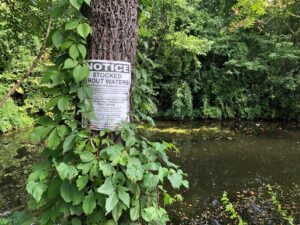
The Lehigh Canal is stocked with trout by the Pennsylvania Fish and Boat Commission. (Jordan Wolman/B&W Staff)
There are also questions regarding other regulations and equal access to the fishing experience in Pennsylvania.
With Saucon Park just across the street, Mike Topping, a member of the Bethlehem Environmental Advisory Council and the president of the Northampton County Federation of Sportsmen’s Clubs, said he loves his 1.5-acre Bethlehem property. Secluded from both the North Side’s colonial quarters and the tighter, more industrial South Side, it’s easy to lose sight of the prime nature and fishing access Topping has in the Christmas City being so close to the Saucon Creek.
Yet the Saucon Creek’s designation as a Class A stream means only fly fishing and artificial lures — not live bait — are permitted in the Saucon.
Topping said that’s a problem.
“You won’t find any kids fishing in Saucon Park,” Topping complained, because fishing with artificial lures is harder and takes more experience while fly fishing is more expensive.
With Saucon Creek in walking distance of “thousands of kids,” Topping said its designation as Class A effectively shuts them out of the fishing experience. And since Saucon Park is a city park, Topping wants Bethlehem to change that regulation.
“If you want to preserve the fishing culture and the streams where the fishing takes place, you better have the voters concerned about those streams,” Topping said. “And if those kids who then become voters never have an opportunity to fish because of restrictions, well then you’ve just turned off a whole bunch of voters. And once those voters don’t give a damn about streams, well then that developer can convince those that are in charge to build their parking lot right on the bank of the river.”
Because of trout stocking, there’s no doubt that more people in Pennsylvania now have access to trout fishing that otherwise would not have existed. But Thompson said the question is: At what cost?
“The stocking (does bring access for people), but the reason it does is because we’ve so heavily impacted our rivers and streams, and so we kind of masked the problem,” he said. “On the one hand, it’s great to bring people outdoors, but I think there’s a lot of justifications out there that basically justify the practice that people want to perpetuate.”
Thompson also rebutted the idea that fishing trout-stocked waters is any sort of a natural experience.
And it all starts from the beginning of the stocked trout’s life.
“Taking a fish that has lived in essentially a concrete box for two years, dumping it in a river that is completely alien to it and has no idea how to survive,” Thompson said. “I mean, basically they’re fed pellets that are designed to float so that fish get used to coming to the surface to eat food, which makes it easier to catch it. But to have a fish that’s completely domesticated and to then suggest it’s somehow providing a nature experience for folks I think is very much an illusion.”
One Saucon Creek fisher from Hellertown, who has been fishing since he was a kid, said he appreciates the way the trout stocking program is managed and likes that certain sections are for artificial lures only.
“There’s some monsters out here!” yelled the smiling Hellertown man to his fishing partner positioned slightly upstream.
And he very well could be right. More than double the trophy trout measuring 14 to 20 inches long were stocked in 2020 compared to 2019, according to the Fish and Boat Commission.

Mike Topping at his Bethlehem home. Topping sits on Bethlehem’s Environmental Advisory Council and is the president of the Northampton County Federation of Sportsmen’s Clubs, Inc. (Jordan Wolman/B&W Staff)
But for those who label all hunters and anglers as overly zealous on killing animals and wielding guns, it’s just not that cut and dry.
Topping said the relationship between conservationists and sportsmen is a tenuous one, yet one with precedent, saying some of the leading conservationists started as hunters and fishers.
“There is one party that is concerned about the environment and is concerned about those kinds of issues, and there is one party that when they look at the woods, all they see is money,” Topping said. “There is always that conflict between those who want to preserve things so that future generations can enjoy them the way they are, and those who say, ‘Hey, I can make a million bucks off that.’”
The bottom line, Topping said, is that “both sides should be working together.”
Mark echoed Topping’s words — equally cautious to tiptoe around direct political divisions.
“I’m a strong believer in protecting the environment, clean water, clean air,” he said. “Other fishermen frankly don’t give a shit. There seems to be one party that doesn’t care about the environment as much as the other does.”
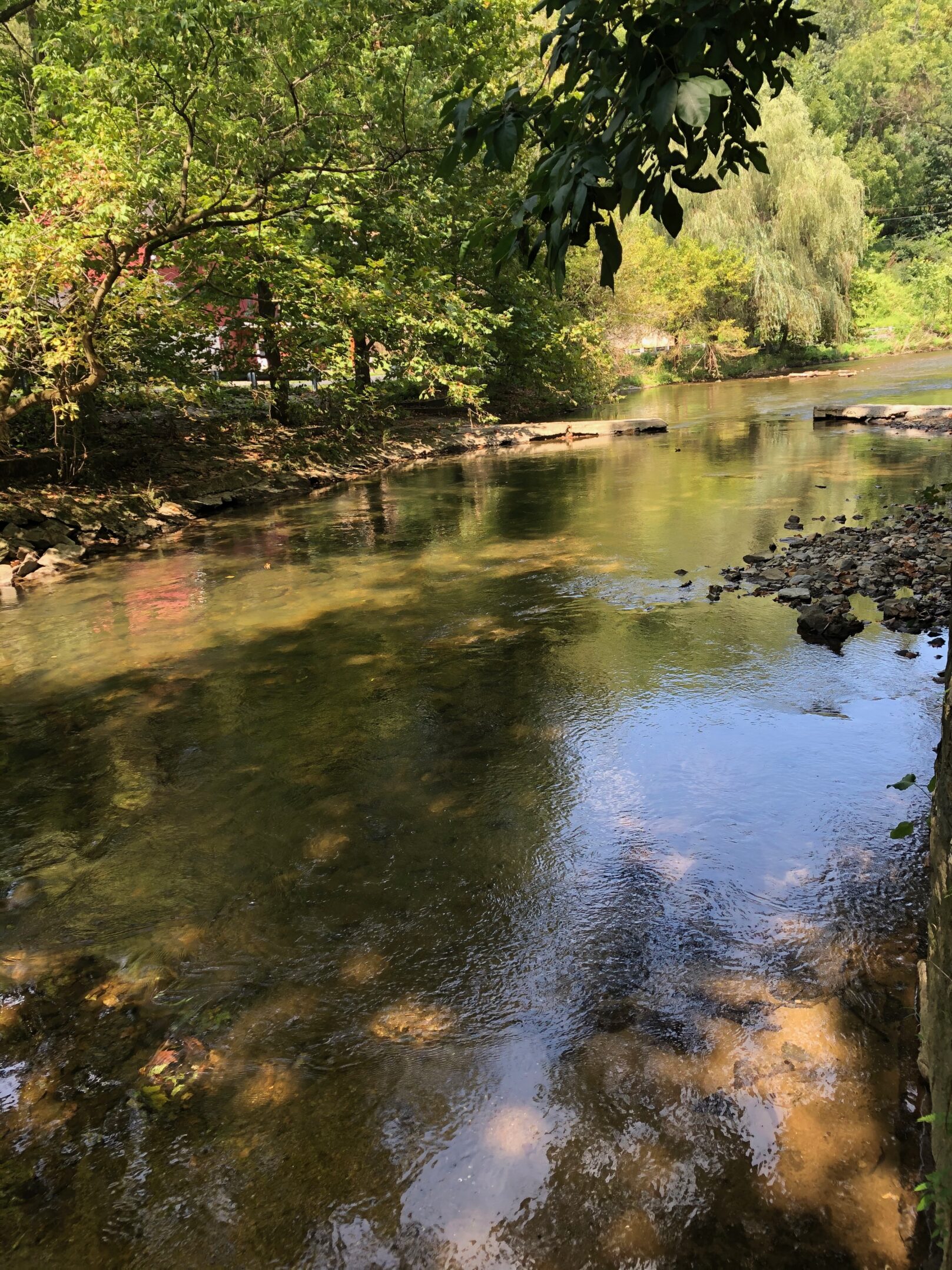
The Saucon Creek on Sept. 8, 2020. The Saucon Creek is a popular location for anglers, but only fly fishing or artificial lures are permitted in certain sections. (Jordan Wolman/B&W Staff)
Still, even among environmentalists, there are different approaches to the issues caused by stocking. And for those Pennsylvanians who have made fishing a lifetime hobby or sport and pass down their passion to their children, these decisions and regulations hit home.
“I’m not against stocking necessarily,” Booth said. “I would like to see a more integrated ecological approach to stocking, but I’m not against it, and one of the primary reasons for that is there are a tremendous number of people who get exposed to the outdoors through fishing. This group of people often gets charged up about conservation and the environment — it’s super important. It’s a way into broader environmental issues.”
Thompson said he supports anglers implementing catch and release for native fish but catch and eat for non-native fish — something that he said would require more education for anglers across the board. And, yes, even though he doesn’t envision it happening anytime soon, Thompson wants to see the end of trout stocking.
“I think it would be great to get to that point,” he said. “I think it would be great to see some areas where there’s no fishing at all.”

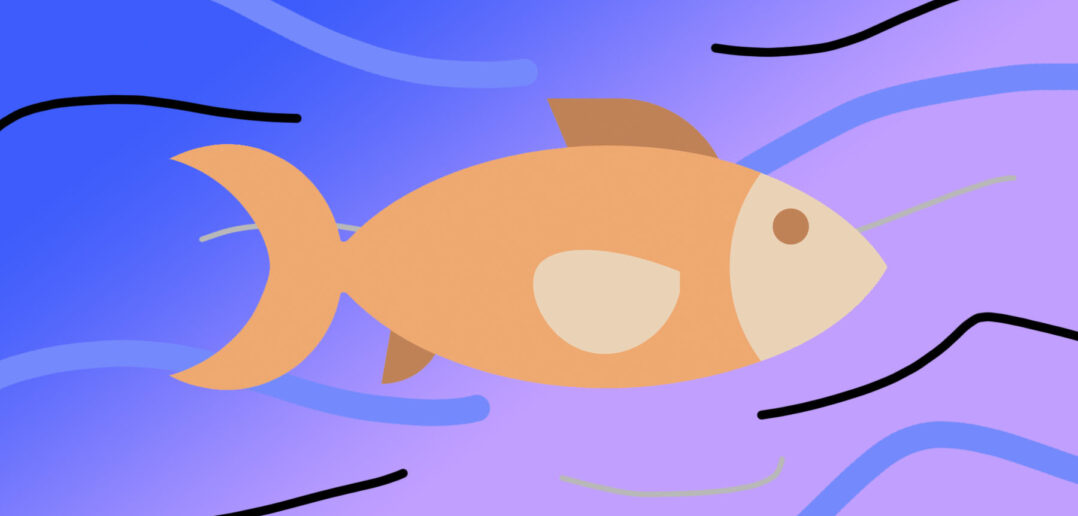


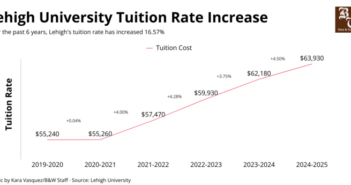

Comment policy
Comments posted to The Brown and White website are reviewed by a moderator before being approved. Incendiary speech or harassing language, including comments targeted at individuals, may be deemed unacceptable and not published. Spam and other soliciting will also be declined.
The Brown and White also reserves the right to not publish entirely anonymous comments.
2 Comments
Great article. Lots of info and plenty to think about from multiple viewpoints. Pleasing and effective artwork and wonderful photographs that are refreshing on a hot humid late summer day. I’m not a fisherman but love creeks. My uncle was a fish warden in NE PA; I wonder what his reaction would have been?
Open up fly fishing and artificial special reg stream to open tackle? In a heavily populated area such as Lehigh valley?
I will give you 10 years tops the stream will be decimated. It is sense of conscious for those who fishes these special regulated waterways not to further damage existing trout population with power bait and size #12 barbed hooks not political and nonsense about who controls the stream.
Mr. Topping you need to retire or step down from Enviromental council immediately.
You are a disgrace and simply lost your mind.